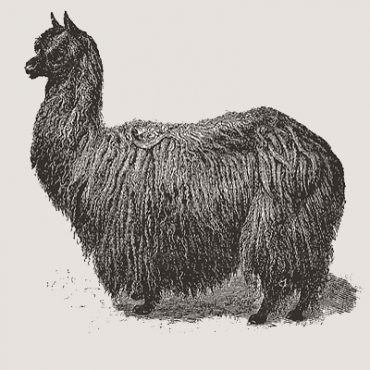
HISTORY
It all began when an ancestral camel from North America migrated to Asia and South America. Two basic species evolved in South America: the guanaco and the vicuña. Both exist in the wild to this day. Following a major period of glacial melting around 10,000 years ago, low-lying pasture land was flooded, forcing the animals to move to higher regions. Here, they were followed by humans, who began to domesticate them. Archaeological findings suggest that it took a long time before these efforts were successful – around 7,000 years ago. The llama was bred from the guanaco as a beast of burden and a source of meat. The huacaya and the suri, with their different fibres and colours, were bred from the vicuña.
The Incas mastered the art of breeding alpacas, achieving an unrivalled level of perfection. In the heyday of the Inca Empire, alpacas were pure in colour. The fleece was equal to that of the vicuña in terms of fineness. The diameter was significantly below 15 microns, which is rare nowadays. Suris were the exclusive reserve of the noble classes. However, the Spanish conquest had a dramatic impact on the people and animals living in South America. Within a single century, almost 95% of the population as well as a similar proportion of indigenous camelids were wiped out, either directly or indirectly through disease.
In the following 500 years, the surviving animals continued to evolve in a protected area of refuge called the Altiplano, a high plateau in the area connecting Peru, Bolivia and Chile. Interbreeding with llamas resulted in genetic hybrids, which now account for about 80% of all alpacas. This compromised the purity of the fibre.
Since the early 19th century, the alpaca has experienced a renaissance. According to current estimates, there are approximately 3.5 million animals in Peru today, comprising around 80% of the global alpaca population. However, this figure is in decline. Due to urban migration, areas of land are being neglected and abandoned herds are dying off. Government projects to promote alpaca breeding have had only limited success because these do not benefit remote regions. We therefore treat our alpacas as a rare and valuable commodity. We hope to play a role in ensuring that the husbandry of these wonderful creatures re-establishes the quality seen in centuries past and has a certain future.
